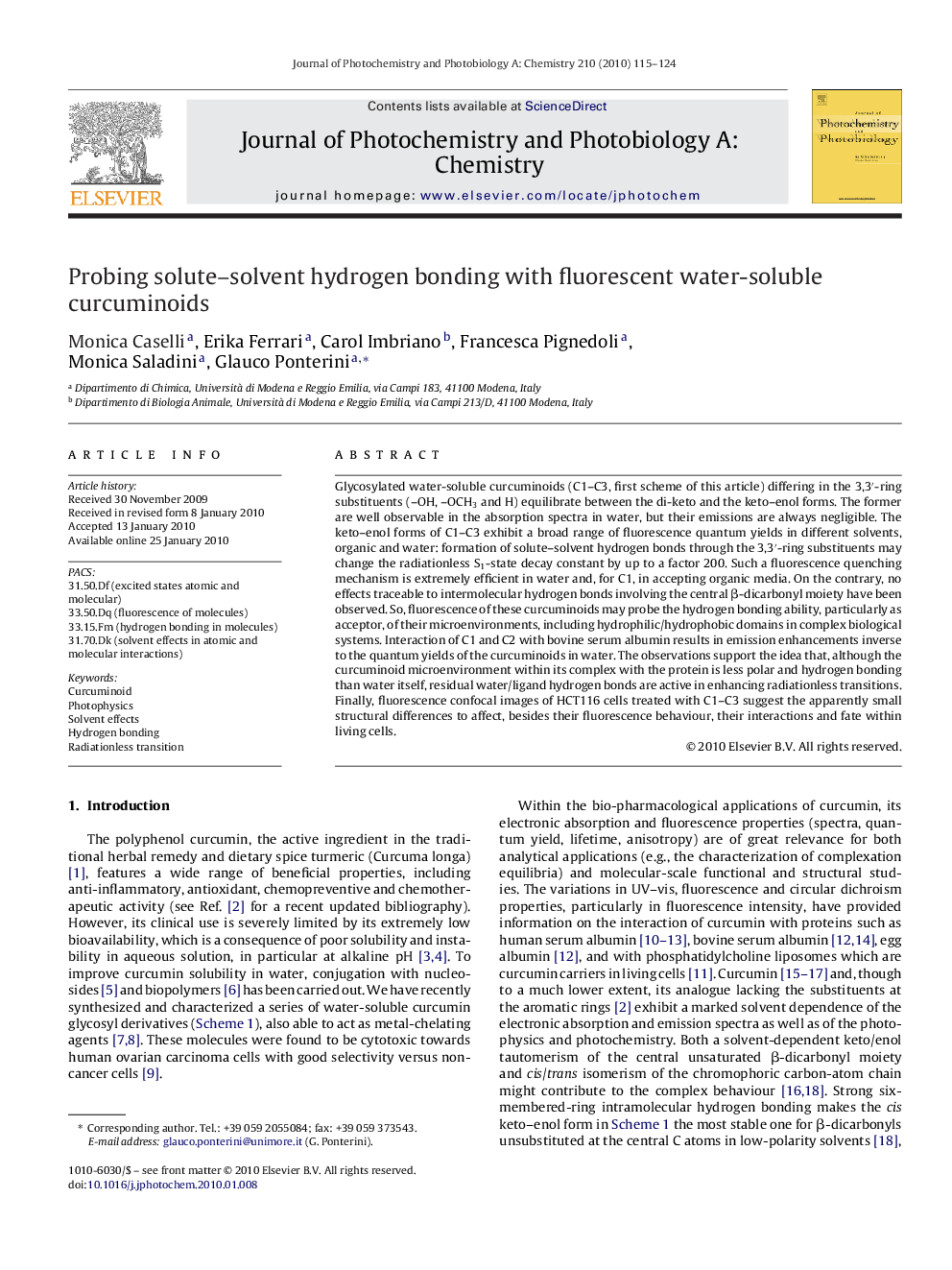| Article ID | Journal | Published Year | Pages | File Type |
|---|---|---|---|---|
| 27034 | Journal of Photochemistry and Photobiology A: Chemistry | 2010 | 10 Pages |
Glycosylated water-soluble curcuminoids (C1–C3, first scheme of this article) differing in the 3,3′-ring substituents (–OH, –OCH3 and H) equilibrate between the di-keto and the keto–enol forms. The former are well observable in the absorption spectra in water, but their emissions are always negligible. The keto–enol forms of C1–C3 exhibit a broad range of fluorescence quantum yields in different solvents, organic and water: formation of solute–solvent hydrogen bonds through the 3,3′-ring substituents may change the radiationless S1-state decay constant by up to a factor 200. Such a fluorescence quenching mechanism is extremely efficient in water and, for C1, in accepting organic media. On the contrary, no effects traceable to intermolecular hydrogen bonds involving the central β-dicarbonyl moiety have been observed. So, fluorescence of these curcuminoids may probe the hydrogen bonding ability, particularly as acceptor, of their microenvironments, including hydrophilic/hydrophobic domains in complex biological systems. Interaction of C1 and C2 with bovine serum albumin results in emission enhancements inverse to the quantum yields of the curcuminoids in water. The observations support the idea that, although the curcuminoid microenvironment within its complex with the protein is less polar and hydrogen bonding than water itself, residual water/ligand hydrogen bonds are active in enhancing radiationless transitions. Finally, fluorescence confocal images of HCT116 cells treated with C1–C3 suggest the apparently small structural differences to affect, besides their fluorescence behaviour, their interactions and fate within living cells.
